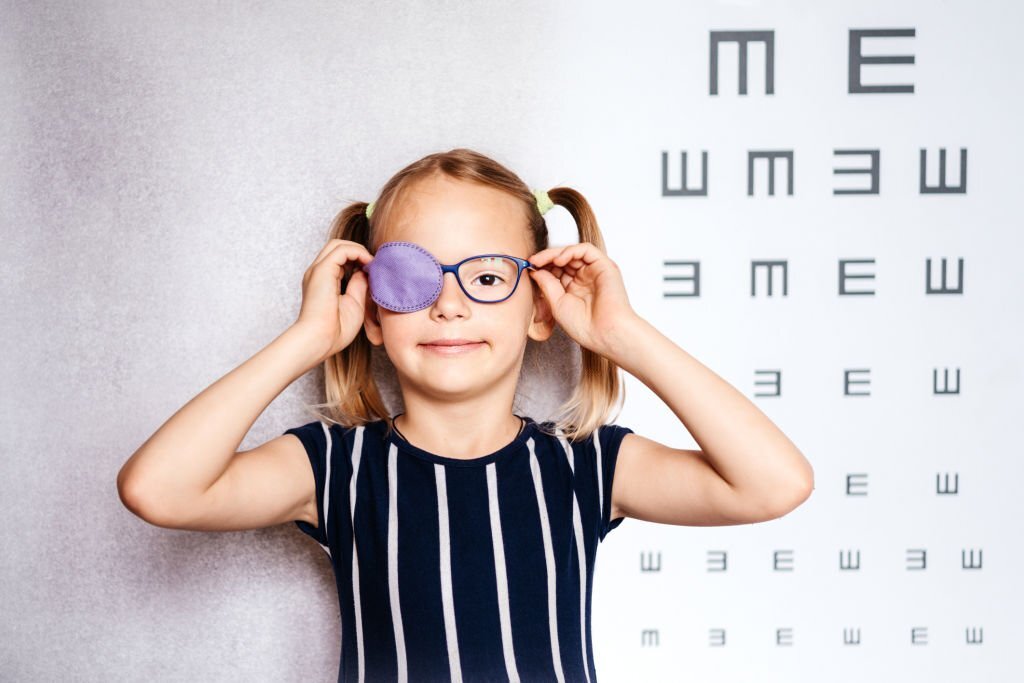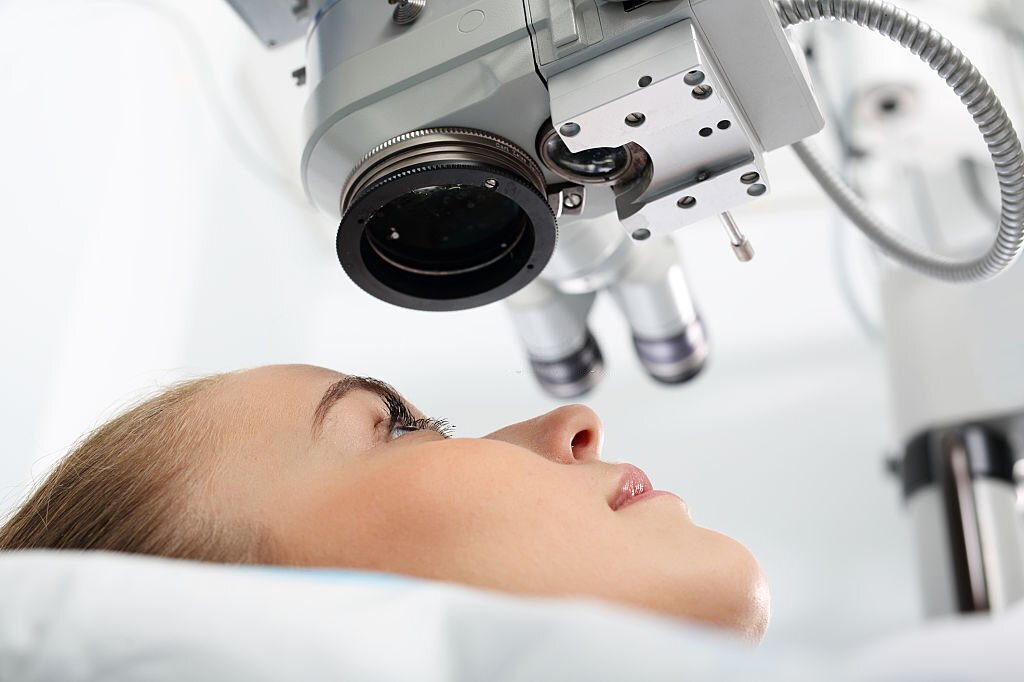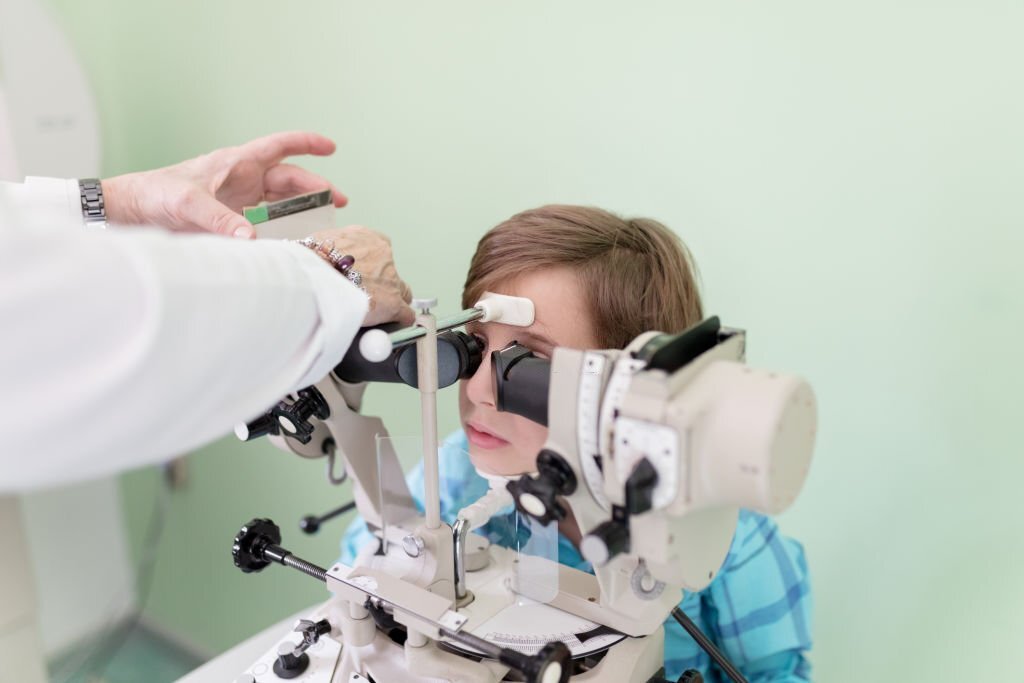Amblyopia (also known as Lazy Eye) and Strabismus (or squint) are both eye conditions that cause vision impairment. Strabismus, or an eye alignment problem, can make it hard for both eyes to look at the same object simultaneously. Amblyopia, a visual acuity problem, makes it difficult to see an image clearly even with prescription glasses. Here’s what causes these conditions, how they are treated, and how they are distinguished.
Lazy eye vs. crossed eye
This extensive side-by-side comparison explains the differences between strabismus (crossed eyes) and amblyopia in great detail (lazy-eye).
Strabismus is an eye alignment disorder in which both eyes are not looking in the same direction at the same time. Visual acuity, or vision, is a difficulty with amblyopia. Someone with amblyopia can’t see an image well in one or both eyes, even with prescription glasses. Both of these diseases are functional vision issues caused by a lack of eye teaming development. They may be addressed at any age, as with any functional vision impairments.
Though they are closely linked, amblyopia and strabismus are two distinct disorders. Amblyopia is often referred to as “lazy eye,” while strabismus is referred to as “cross-eyed.”
What exactly is a lazy eye? A person with a developmental issue in just one eye is diagnosed with it. It begins in childhood and progresses to the point where the eye cannot function correctly even with the use of prescription lenses. A loss of visual acuity is also a defining feature.
Amblyopia is a condition in which one or both eyes fail to acquire a clear vision for causes other than an eye health issue that cannot be corrected with glasses alone.
Three forms of amblyopia
Amblyopia Refractive
Refractive amblyopia does not have the appearance of a “lazy eye,” in which the eyes are properly aligned. However, one eye may have formed improperly, resulting in a person being long or near-sighted in one eye but not the other. This occurs when one eye’s refractive error is larger than the other. The brain “disables” the more far-sighted eye in favor of the eye that gives a sharper image. The condition may go overlooked by parents or a doctor because the weaker eye stays straight. It’s possible that refractive amblyopia won’t be discovered until the youngster undergoes a vision test. Corrective glasses or contact lenses may be used to address this issue.
Deprivation Amblyopia
When one eye is “deprived” of vision owing to the growth of a blockage, such as a cataract, this is referred to as “deprivation or occlusion.” Visual information cannot reach the retina and eventually the brain because the ocular medium becomes opaque. This kind of amblyopia may affect one or both eyes, and it must be detected early to avoid the kid from developing visual problems.
Strabismic
A squint arises as a result of a mismatch between the muscles that maintain the posture of the eyes in this kind of amblyopia. The brain essentially “ignores” the non-straight eye, relying instead on the pictures produced by the stronger eye. Eye exercises are used to attempt to retrain the child’s weak eye muscles, and an eye patch is worn over the “good” eye to stimulate the use of the “bad” eye.
Eye teaming is one of the three visual skills that make our vision functional, and strabismus is a serious difficulty with it.
Amblyopia is most often caused by strabismus, and amblyopia frequently occurs with strabismus. Amblyopia, on the other hand, may arise without strabismus.
When the visual image of one eye is compromised, the brain is unable to adequately merge the two views, thus one of them is suppressed, or “turned off.” The persistent suppression of an image from one eye might cause amblyopia to develop in that eye.
The brain never learns the capacity to see properly with both eyes when the visual images of both eyes are compromised.
The brain never learns the capacity to see properly with both eyes when the images of both eyes are compromised.
Symptoms of strabismus
Poor depth perception, similar to amblyopia, is a sign of strabismus, but it may also cause double vision, weariness, headaches, and “jittery” vision. Again, if your kid is young, it may be difficult to detect a disease like this, so get professional assistance if you have even the smallest suspicion that your child may have vision difficulties.
When compared to individuals with intermittent strabismus, people with persistent strabismus are less symptomatic (though not asymptomatic). This is because they often block signals from the turning eye, preventing double vision and other symptoms.
The terms ‘intermittent’ and ‘constant’ relate to whether the eye turn occurs just sometimes or consistently.
Intermittent Alternating Exotropia, for example, is characterized by one eye moving outward, away from the nose, in comparison to the other. When this occurs, the brain is unable to perceive binocularly, with both eyes working together as a team, resulting in diplopia or double vision, one eye suppression, and/or the inability to see 3D depth. When the eyes are intermittent, it implies they don’t turn all of the time, but they do sometimes function together as a team. When it alternates, it implies that the right eye is turning outward at times and the left eye is turning outward at other times.
The terms ‘alternating’ and ‘monocular’ relate to whether one eye is constantly turned or whether the turned eye changes back and forth between the right and left.
Causes of strabismus
Experts aren’t sure what causes strabismus, although it’s thought to be caused by a failure of the eye muscles to act together. The most prevalent kind of strabismus is idiopathic (caused by an unknown factor). Strabismus may also be caused by the following conditions:
The cause of strabismus might be traumatic or hereditary. Poor vision in one eye, refractive flaws that haven’t been rectified by prescription lenses, and even brain tumors and strokes are all common causes of this illness. Down syndrome and cerebral palsy patients are also at a higher risk of developing the disease.
Strabismus is one of the most prevalent eye disorders in children, affecting 2 to 4% of the population. When the eyes are not aligned correctly, it is known as strabismus. Your child’s eyes may turn inwardly (esotropia), turn outward (exotropia), upward (hypertropia), or downward (hypotropia).
Strabismus may affect your kid from birth or develop later in adulthood. Strabismus may also occur as a consequence of an accident or another medical condition. Strabismus affects certain children on a part-time basis, whereas it affects others all of the time.
Treatments for Strabismus
Muscle Surgery, Atropine Drops to paralyze focusing muscles, Botox injections, Prescription Lenses with or without prism, and Vision Therapy are all options for treating strabismus (including Orthoptics). Any therapy that focuses just on the eye muscles, such as Strabismus Surgery or drugs (Atropine, Botox), is unlikely to alter the brain and neurological system enough to normalize vision and enhance vision, such as binocular vision and 3D stereopsis.
In many situations, even after many strabismus procedures, a durable normal look is still not reached in terms of aesthetic effects alone. To put it another way, strabismus surgery is generally only cosmetic surgery, but Vision Therapy (strabismus therapy without surgery) alters the eyes, brain, and body to enhance both appearance and vision. Treatment options for strabismus are many.
Depending on the origin of the condition, your eye specialist will recommend the best course of therapy. It might be as simple as providing prescription eyeglasses or as complex as vision therapy treatment. Eye muscle surgery may be required in rare circumstances. The most important thing to remember is that detecting this ailment early may frequently result in a full recovery. So don’t be afraid to contact an ophthalmologist.
Symptoms of Amblyopia
Depth perception issues, head tilts, eyes that seem to be unaligned, or one eye that wanders are some of the most prevalent amblyopia symptoms. Given that the illness is most frequent in children and develops at a young age, it may be difficult for a child to recognize that there is an issue.
Both parents and children may be unaware of their child’s amblyopia since it generally affects just one eye. Many parents are unaware that their babies and toddlers need a full vision check by an optometrist at an early age, and as a result, many children go misdiagnosed.
When you cover one eye, your youngster may fuss or struggle, which might suggest amblyopia. As a result, you should schedule an appointment with a local eye doctor to have your child’s eyes examined and confirm that they are in excellent condition. Early detection of illnesses lessens the negative influence they may have on children’s life.
Is it possible to fix amblyopia?
Amblyopia and strabismus may be treated, but it’s critical to discover them early. Make an appointment with your optometrist for your young children as soon as they become four years old, in the aim of spotting any possible issues early.
Treatment of Amblyopia (lazy eye) using Vision Therapy
Patching the “good” eye, forcing the problematic eye to be the main source of visual information, and “strengthening” it, is the most frequent therapy for Amblyopia. Surgery to straighten a turned eye, followed by patching, maybe part of the therapy approach.
Although strabismus and lazy eye (amblyopia) are not the same things, they may happen at the same time or one might induce the other. Although the therapy for both disorders is not necessarily the same, Vision Therapy Treatment — with or without corrective lenses — is an effective treatment for both of them.
When it comes to correcting a lazy eye, how long does it take?
Most children with lazy eye improve their eyesight within weeks to months with adequate therapy. The duration of treatment might range from six months to two years.
It’s critical to keep a watch on your kid for recurrence of lazy eye, which may affect up to 25% of children with the disease. If your lazy eye reappears, you’ll need to restart your therapy.
Is it possible to correct amblyopia with LASIK?
No, in most cases. However, utilizing LASIK to cure near-sightedness and farsightedness may lower the likelihood of acquiring the condition.
Amblyopia and strabismus may wreak havoc on a child’s performance
When an eye turn is mild and subtle, others may not see it; nevertheless, when the eye turn is more severe, others may detect it. Apart from the cosmetic implications of a visible eye turn, eye turns have a significant impact on functional vision, resulting in signs and symptoms such as
- poor performance, attention, and efficiency at school or work
- pain, headache, discomfort, double vision, lightheadedness, and general fatigue
- Depth perception issues, coordination difficulties, improper posture, and poor athletic ability
- specific reading difficulties such as loss of place, misreading, and rereading
The brain tries to adjust to the misalignment of the eyes in some people by learning to suppress or ignore the image in the turned eye. While this aids in the elimination of double vision, it does not always alleviate all symptoms, and it still leaves you with impaired visual function and no depth awareness.
Other vision skills, such as focusing and eye movements, may not develop or operate properly as a result of the eye turn, further affecting the individual’s visual abilities, indications, and symptoms.
Conclusion
Whether your question is amblyopia vs strabismus, lazy eye vs wandering eye, The answer is the same, get yourself or your child to the eye doctor or low vision specialist. The sooner the condition is caught, and treatment begins the better the outcome, not only for the conditions but the consequences of the conditions such as learning and physical skills.
















